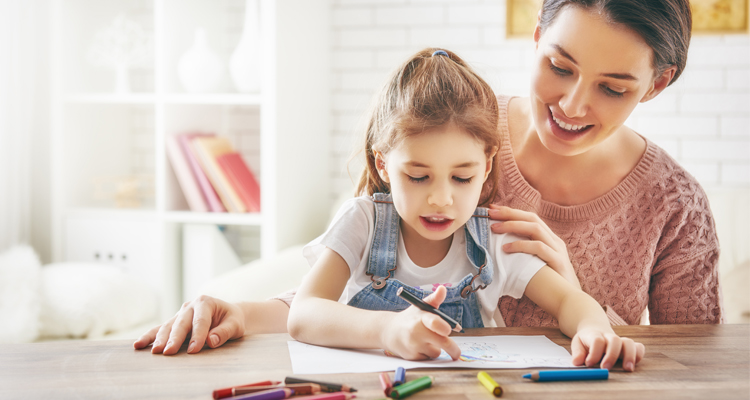Schools across the country continue to cut art budgets, and are simultaneously building STEM programs. As the emphasis in education shifts farther from art, and moves deeper into technology, it’s important to step back and recognize the many ways art affects the young mind’s growth.
Drawing Skills Enhance Learning
Don’t discourage doodling. It’s absolutely a part of a child’s development and leads to more effective learning. Drawing skills (and other artistic abilities) don’t distract from learning. In fact, they can be very useful in enhancing other skills. Drawing activates parts of the brain that connect to math, science, reading, and tying your shoes.
Expression
Drawing is not just about people and trees. It’s also about diagrams, maps, graphs, and webs. When studying world history, children will understand more thoroughly and retain more information if they draw the map instead of just looking at it. Students who draw maps in their history notes will achieve a firmer grasp of the concepts and ideas presented to them, and they will grow up to be adults who can articulate their ideas to others in a simple and organized way. They’ll be able to diagram the workings of their new invention on a napkin, while splitting an appetizer with a potential investor.
Observation
In order to draw something, a child has to look at it. In order to draw something well, they have to pay close attention. Children who draw frequently will notice more details about their surroundings, and how those details relate to each other. Drawing leads to a more intense understanding of the world around them, and that attention to detail will spill over into other aspects of their life. They might be better able to find math mistakes, or pay closer attention to their spelling, or notice when their shoe is untied. We have to be careful, though. Observant children also hear all the words we use in traffic.
Critical Thinking
The process of observation also leads to more intense critical thinking. For example, some kids don’t think about the sky at all. Most kids can tell you the sky is blue. But the child who draws might notice a difference in the quality of the blue, and wonder what makes the sky blue and the grass green. The artistic child will think about the sizes of the windows in a building, and the reason for rectangular doors, and why a school bus is yellow. They see the details most others take for granted, and they become more curious, which leads them to ask questions and find alternate solutions to problems. We need more problem-solvers and critical thinkers who will design better nursing homes for us as we slip into our golden years.
Spatial Awareness
Drawing is really a matter of understanding line and shape, color and value, and how these things relate to one another. We look at a scene, and break it down into shapes, and transfer those shapes (and how they relate to each other) onto the paper. Proportion, scale, perspective, and depth all come into play. Children begin to form an understanding of these concepts long before they can articulate them. The child who has a strong foundation in these things will become an adult who is better equipped to read a map, pack a suitcase, arrange furniture, fit a pizza in the fridge, or parallel park. They’re also better at Jenga, and can get more supplies in the van when the zombie apocalypse happens. Don’t you want your children to be useful when the zombies show up? I know I do.
Planning
In order to create an effective drawing, the artist must plan ahead. Before the pencil touches paper, the artist must have a basic idea of the content and arrangement of the drawing. This small bit of planning, this moment of thought, this basic operation in the imagination is key. In practicing their drawing, the child will arrive naturally at this preplanning stage, and it will eventually become part of their routine for other tasks as well. They will begin to think about what they will write before they begin writing. They will think about how they will solve the math problem before they grab a calculator. And they might even start to think before they speak.
What Can I Do?
By all means, encourage drawing. Buy the supplies. When your child wants to explain something to you, let them draw it out. Let your child show you what they are learning in school. Draw with them. Play drawing games. Ask them to teach you how to draw something. While you’re at it, ask them to teach you something they learned in math class, too. Teaching it will help them remember it.
In the end, keep in mind that drawing is fun, and that’s really what kids need. Encourage them to draw, doodle, paint, and build. Those skills will spill over into all other aspects of their life, and it’s the most engaging way to learn.





































